How to Sell Everything You Own & Travel the World
The Best Way to Sell Adventure Travel? Experience It for Yourself
As more travelers seek authentic experiences, it’s not surprising that many of them are turning to outdoor adventure travel, where they can connect with nature and discover everything a destination has to offer.
For agents, the best way to tap into this growing market can be to experience it for themselves, said Kirk Reynolds, founder and CEO of Discover Outdoors, which provides guided adventure trips in North America and around the world. Reynolds talked to Travel Market Report more about how travel agents can tap into this viable segment.
What are some misconceptions about outdoor adventure travel?
Our greatest reward is having someone experience a new adventure for the first time. There is an unfortunate misconception that you need to have experience to go on an adventurous trip. As guides, it’s an honor to have our clients’ trust, to help them find the courage so they can try rock climbing or to raft a whitewater river. We love partnering with travel agents who are willing to push their clients’ boundaries. These are also the clients that will come back year-after-year, seeking advice and inspiration on new ways to be adventurous.
What advice do you have for travel agents looking to sell more outdoor adventure travel?
Travel agents have an enormous opportunity to be a part of the growing adventure travel market. More and more, parents are looking to go back to traditional outdoor experiences that bring families together in meaningful ways. Exploring a hiking trail, spotting wildlife and sharing stories over a fire are great ways to create lasting memories. And while adventure travel is a global opportunity, there’s an abundance of exploring to do in our backyard. Travelers are in need of uniquely curated experiences, especially if they want to check off bucket list destinations like the Grand Canyon, while avoiding the masses. This is where travel agents can provide tremendous value, by giving their clients private access to big-name destinations.
How can agents grow their outdoor adventure business? How does Discover outdoors plan to work with agents to serve travelers?
The best way an agent can grow their outdoor adventure business is by earning a little street cred. Clients want to hear your story, what you felt from your own adventures. They want to be inspired by your passion for the outdoors and what adventure means to you personally. We invite agents to join us on a Discover Outdoors adventure. Even if it’s just a day trip, agents can join us for adventures in the Northeast, Southern California, Northern California, the Rockies, and beyond. You don’t have to be in the best shape of your life, either. Adventure is about stepping into the unknown and believing in yourself, regardless of your fitness level or experience. What’s most important is that you take the first step by signing up.
How to Sell Everything You Own & Travel the World
T hough the very thought of what I’ve done would have shocked my former self years ago, I now take pride in having sold all of our possessions not once, but twice now. During our combined 2.5 years of nomadic wanderings, it was liberating to know that nothing collected dust in a storage bin, or sat in cluttered piles in my in-laws basement. It was all gone, save for the possessions in our 28-litre backpacks.
But what if you don’t want to get rid of absolutely everything? No problem! This post will help you effectively de-clutter and sell your stuff, even if only some of it. After all, every dollar earned is another dollar towards a flight, a bus ride, a hotel – one dollar closer to your dream adventure.
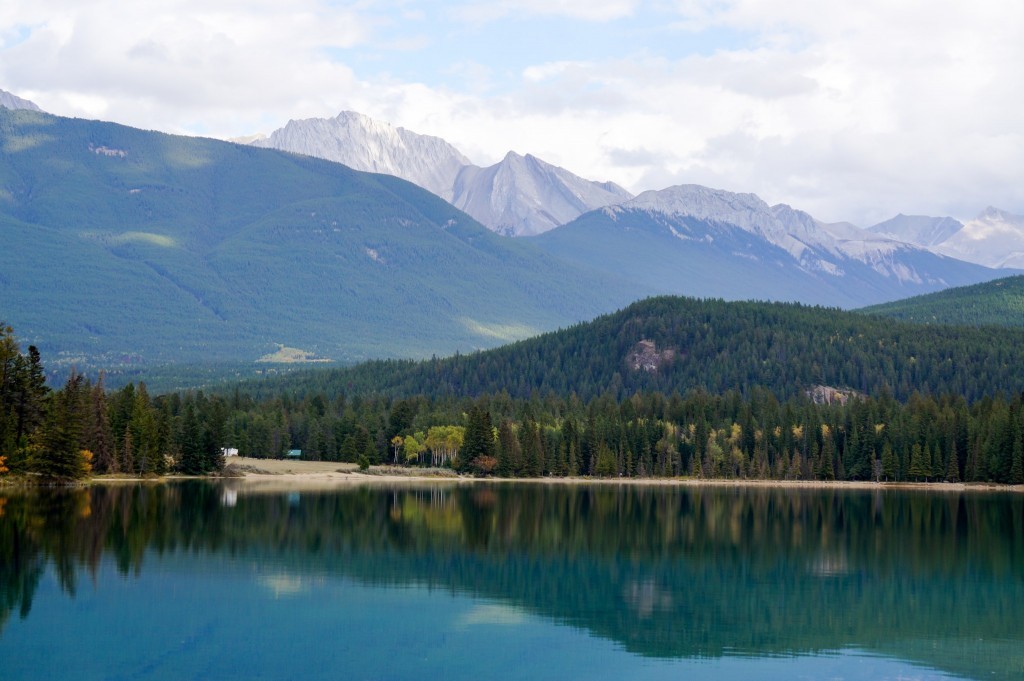
Our experience
Twice now we have sold all of our possessions with the objective of getting the money back in the bank, ridding ourselves of crap, and inflating our travel savings. Everything described here is from our own experiences.
The first time we sold everything we owned in 2012 (and I truly mean every single last thing!), we made $6,500 CAD total in cash. We earned an additional $5,500.00 selling our car. That’s a grand total of $12,000 from two people living in a two-bedroom apartment over three years. Yep, we had a lot of crap!
The second time we sold all our belongings (2014), we made approximately $1,000 after minimalist living in a one-bedroom apartment for a year in Australia. In that time, our possessions had all been either given to us for free or bought used. We pretty much broke even or made slightly more than what was spent acquiring those items. Cumulatively, that’s a grand total of $13,000.00 and let me tell you, for any savvy traveller, that money will take you far.
The cleansing process from our condo in Toronto.
Selling all of your life’s possessions is not easy. It just isn’t. Humans like stuff, and we accumulate a lot of it. The reality is, some of that “stuff” can hold us back from the things we want to do, like travel or move cities. This guide will concisely lays out the steps to selling everything – or at least some things – to maximise profit and minimise the stuff that is holding you back from adventure.
“But here’s the thing–no matter how many possessions you have, you never feel secure. As soon as you get one thing, there is always something else you “need”.”
― Karen Kingston
Step 1: Detach from your attachments
The utmost important step of selling items is not the actual selling, but your commitment to passing it on. And remember – that’s all it ever is. Not dumping, not getting rid of, not wasting – you’re passing something on . In an era where we senselessly burn through resources in the name of consumerism, passing things on is a good way to make money and help the environment.

I won’t spend much time rambling on how to detach from your “things”. Just know that the more you sell, the more you’ll feel smothered by the remaining items that are unloved, unused, and just unnecessary.
Next, rest assured that you will most likely not miss that item . Hell, I can’t remember 90% of the crap we sold! Besides, nearly everything is replaceable and/or can be re-bought cheaper second hand.
We’ve always thought it was senseless to place items in storage where they would only depreciate in value. My view is to purge everything you can part with. You may as well make the maximum profit while an item is more current. It’s not going to get any newer.
Step 2: Sell early, sell often
Having had two very different experiences selling our possessions, I strongly advocate for giving yourself as much time as possible to maximize profit. In our first sell-off in 2012, we began selling three months pre-departure.
I cannot emphasise enough the value of time. Without it, you will end up purging items by the bag load to your local Goodwill or Salvation Army. Not that donating is bad (it’s great!), but you are missing out on monetising on at least some of your possessions if you need the cash.
When you have time, you have patience . Sorting and pricing requires mental energy. Create designated evenings or weekends where it’s “stuff sorting” time – possibly accompanied by music and beers if you so wish to pump yourself up for your impending travels (usually effective til about beer #3).
Our selling routine went something like this:
- Determine if item is sell, donate, or keep*. (*If it’s keep, ask yourself why. Is it irreplaceable? Choose your keeps CAREFULLY ! Re-visit your “keep” pile on several occasions. It gets easier to pass on as you revisit)
- If selling, take a few quality photos. Photograph the front, sides and back as appropriate. Take clear photos in bright light (natural sunlight is best). Good photos often determine not just if an item sells, but whether it looks deserving of the listed price.
- Don’t be lazy with postings. Detailed description paint a clear idea of the item for buyers. It will not only improve your likelihood of selling, but getting your asking price. Be convincing and specific. State an item’s true condition, features, colour, and any freebies or extras you’re willing to include. Help the buyer envision its quality and potential use (e.g. “would make a great gift for the holidays” or “a lovely piece to brighten up any living space”). Finally, make sure to include a link to a mass album or a page of all your listings to say something like, “I’m selling many more items as I’m going away overseas, feel free to check them out here: ____”.
- Physically sort items and have clear piles for what’s what. It’s ideal to keep your “for sale” items together. If interested buyers are picking up from your house, you can then welcome them in to show your other items for sale. On average in our experience, half of buyers who see our other stuff will buy something else too, especially if a bundle price is offered.
Once you have a clear routine, you’ll get efficient at sorting and selling. For many, this is the most painful part of the process, but it is where you will likely make the biggest chunk of savings for your trip. It pays to sort and sell ahead!
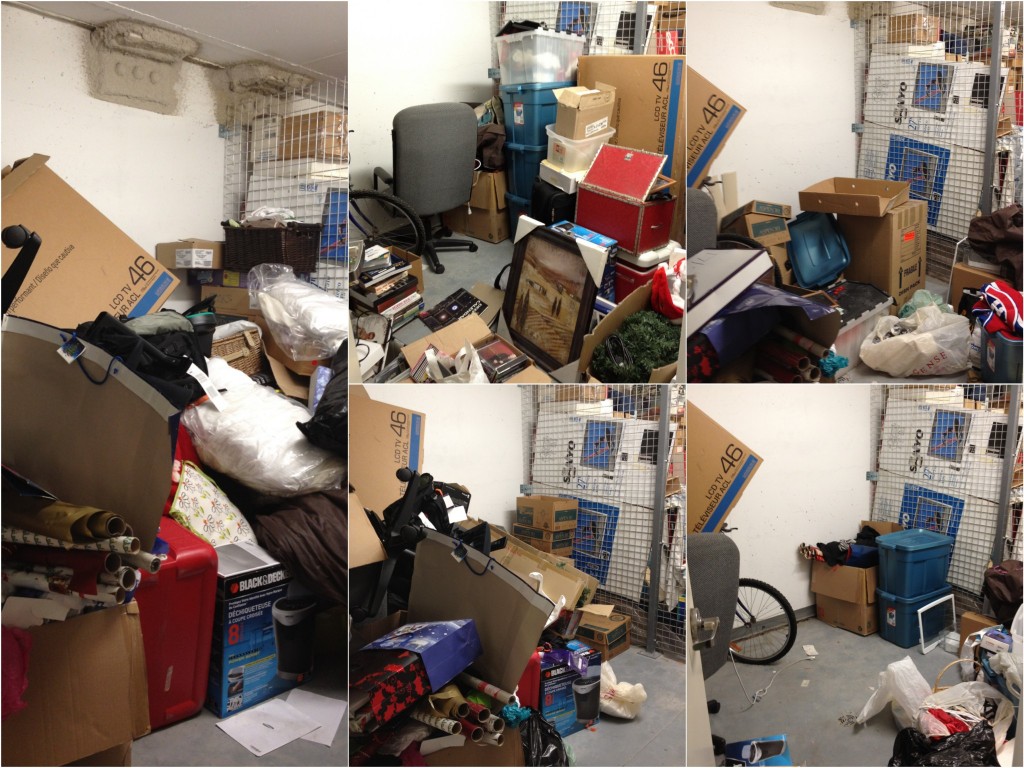
Step 3: Research and price properly
Researching and properly pricing items is key to getting the most money back in your pocket. Are you starting to see a pattern here? Take time to research. Research grows those savings!
As you choose items to sell, try and confirm the regular retail price (RRP). If you’re always guessing, you could be really underselling a piece, and it takes hardly any time to do a quick Google search. Check Amazon or eBay to see going rates for your item in new condition.
Now: pricing. I usually sell somewhere around half price of an item, with a 10% buffer above or below. If you’re totally unsure, especially with larger items, search locally on Kijiji or eBay to see prices of similar items.
When in pricing doubt and when you have the time, start higher (time permitting) and see if you get any bites. I usually give big-ticket items 1-2 weeks before price-dropping. As you can see, this is why having the time on your hands is essential to maximise earnings!
Step 4: Sell everywhere
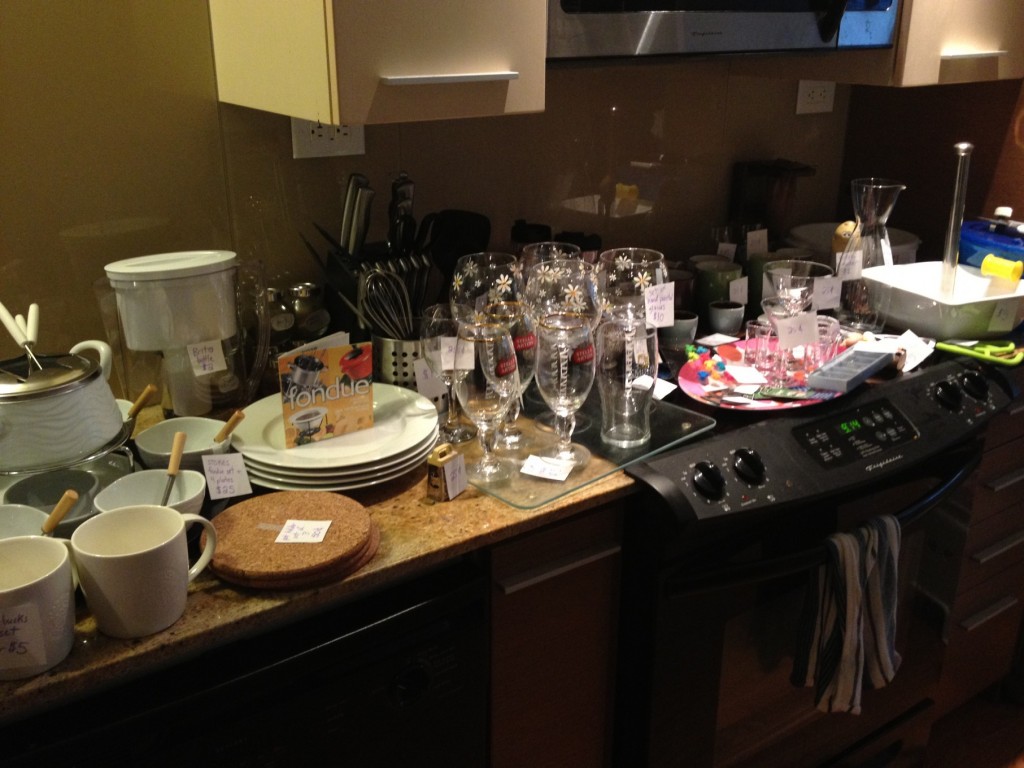
The less venues you’re using to sell your items, the less potential buyers are seeing them. If you have the patience and hours, post on all venues possible that are used in your local area, including:
-
(USA, Canada, Europe) (Canada, USA, Australia)
- Facebook albums, Facebook marketplace (global) (global) (global – more for craft goods) (USA, U.K.)
After having tracked literally every transaction from our first sell-everything-you-own-experience in Toronto, most of our buyers were from Facebook friends, Kijiji, and Craigslist respectively.
A photo album on Facebook of the items we were selling made it easy for friends to see and call dibs on, which was hugely successful. Kijiji and Craiglist, though tiresome due to no-shows, were effective too. Personally, I never wasted my time delivering items to buyers. Only on a handful of times we met people in a public place that was convenient. Not to mention, with pick-ups you can invite people in and sway them to buy something else if you have more for sale.
In our second experience selling everything in Sydney, we had less success via Facebook and sold most items via Gumtree (Australia’s equivalent to Kijiji). Hence, you need to figure out what’s common in your community.
Step 5: Stay strong!

The final important note of selling everything you own is to simply stay strong – mentally and emotionally. Don’t mourn for the pieces of plastic and metal that were once shelf ornaments, dish sets, or a TV stand. You no longer need them in your life. You’re off on an adventure, remember?!
My travel memories have – and always will have – significantly more value than any physical item I’ve owned. As I’ve wiggled my toes in the white Galapagos sands or burned my thighs climbing the slopes of Machu Picchu, I have never longed for my IKEA wall frames or designer shag rug. Rest assured, you WILL NOT miss your crap!
Inspiring De-Clutter Reads
Need that continued push as you sort through the seemingly insurmountable? Here are some of the most practical ones we recommend:
The Thrifty Gist
- Sort & sell everything you don’t need. Give yourself plenty of time & be patient!
- Put a good effort into taking bright, quality photos & provide detailed descriptions in your postings. Don’t be lazy!
- Post on every platform used in your community – Facebook, Kijiji, Gumtree, Craigslist, Decluttr, VarageSale being common ones
Materialism is seemingly impossible to avoid in our modern world, but freeing yourself of it can be your primary financial means to travel. Keep at it, and chase your dreams!
Related
Jen is a five-foot-short fireball with an itch for adventure. Besides travel, her shameless vices include wine-fuelled nights with good company, road trips to remote places, and squealing at adorable elderly dogs. (Also: COFFEE!).
6 Responses
Love this. Can you maybe take requests and write one on finding the cheapest ways to get around (fly etc) as a four person family??
Cool article, thanks. I am really curious on what did you guys took with you on your trip. My heart does not belong too much on stuff besides consumer electronics e.g. MacBook or iPhone. Did you take such things with you?
Hi Pascal, thanks for reading! We each had a 28L backpack and we each did take electronics including 1 Macbook air each, 1 iPhone each, and one Sony camera. This allowed us to snap photos, edit, and blog on the go to capture our memories which I’m glad we did. It’s never the same to try and blog something in retrospect months later.
Our bags were very small – only the essentials & when we got bored of clothes we donated them in exchange for buying a new shirt for example. In the future I’ll be writing an entry on what to pack & how to pack light!
Thanks for the very fast reply. That is an impressive small backpack. I am curious on your future block entry, since I wasn`t be able so far to pack under 40 L by also carrying sleeping bag, tent and equipment for cooking. Looking forward and thanks quite a lot
No problem Pascal! Yes it’s VERY small and to be honest I’m not sure I could travel that light again, but who knows! It sufficed for 6 months of generally warm weather through South America, Europe, and Japan. It’s important to note we did not have camping gear with us. Either way I hope my future post on packing light will be helpful. Take care & safe travels wherever you may find yourself!
Leave a Reply Cancel reply
Hey there!

We’re Jen and Ted, former partners turned friends with a passion to inspire affordable travel. 8 years ago we ditched our jobs, sold everything & pursued a life outside the 9-5 bubble. We learned travel doesn’t have to be pricey, and created this blog to prove it. We haven’t looked back since!
Newsletter
Follow Us
© 2022 Thrifty Nomads • All Rights Reserved • Privacy Policy
Our website contains some affiliate links in relevant areas. This means we get a small commission, at no extra cost to you, for recommending a product we personally use, trust, and own.
How to sell adventure travel
Three types of adventure traveller were profiled at last month’s Adventure Travel Conference in London. Experts gave their views on how to sell adventure to the solo, silver and family markets. Katherine Lawrey gleaned a few tips


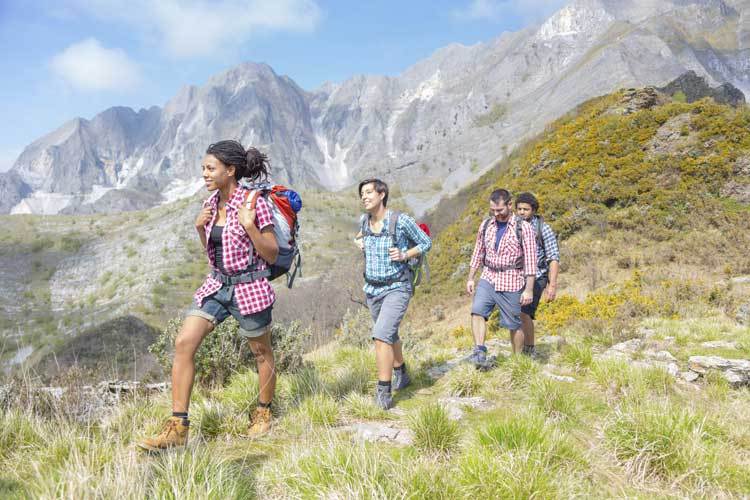
Solos
Don’t underestimate the size of the solo market, cautioned Lyn Hughes, Wanderlust editor-in-chief. She presented results from a Wanderlust reader survey showing 24% of adventure travellers define themselves as “solo” travellers.
The number was higher still when it came to tour operators who classed 33% of bookers in the solo category.
Speaking from experience as a solo traveller, Hughes highlighted common concerns they have about the travel experience. They are:
- Ease of travel
- Security
- Company of like-minded people with shared interests
- Equality
Sleeps
When it comes to accommodation, Hughes said that solos resent paying single supplements. “It’s the biggest gripe,” she admitted. “We want to feel we’re being treated the same, not paying more for less.” She advised operators to deal with room arrangements sensitively: “More mature travellers want their own room. Sharing can be a backward step for them.” And she also warned not to allocate the furthest away rooms to solos. “I was once given a tent the other side of a river from the rest of the group in the wilds of Africa,” she said. “Nervous solo campers do not like being in remote tents.”
Eats
The evening meal is an important element of a trip, and it can be isolationist if you’re on your own, she advised. The first night is a particular sticking point before the group has had a chance to gel. “I want a tour leader to take charge on the first night,” she said. “I know people who’d rather get room service than venture out on their own.”
Allocated seating was another thorny issue. “Think carefully where you place solos,” she said. “On an expedition ship I was put on a table with a group of Italians who couldn’t speak English, and that was it for the voyage.”
Other concerns
- Being met at the airport
- Will they feel stifled as part of a group?
- Sex: either being the object of unwanted attention (even frisky tour leaders can be to blame) or being mistaken for a sex tourist.
Sell your solo expertise
Recommend tour operators and hotels that cater well for solo travellers, and include the details on your websites, in your blogs and Facebook posts. Think of every stage of the experience for a solo traveller, and communicate what is on offer… that could really make you stand apart, she said.
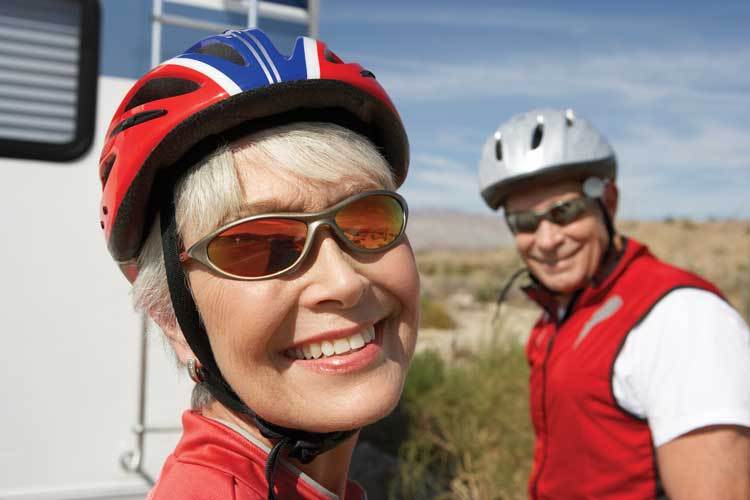
Silvers
Debbie Marshall set up Silver Travel Advisor in 2011, which now has 40,00 members. “TripAdvisor doesn’t address the specific needs of the growing demographic of silver travellers,” she explained. “Reviews are important, but it has to be the right review for you.”
This is a market with significant potential, she said, pointing out there will be more people over 50 than under 50 in the UK by 2020. One in three babies born today will live to be 100, and over-fifties hold 80% of the nation’s wealth, she added.
Avoid labels
Not all silver travellers are the same, Marshall said, and it’s a mistake to put them all in the same box. She summarised the decades as follows:
- Fifties: A sandwich generation – they don’t feel old!
- Sixties: They’re healthy, wealthy and active. They still can!
- Seventies: Still active, but this decade can bring its challenges. Health and mobility concerns can start to kick in, and it can be difficult to get travel insurance.
- Eighties: There’s a gradual decline and the rise of the three “D”s – dependency, dementia and death.
There’s a massive opportunity for silver adventure travel, but it is finite… you can’t really be selling adventure holidays to nonagenarians, she said. And as you get older, adventure becomes gentler. Rambling becomes ambling. But if you want a role model, check out Norma, the snowboarding granny (aged 75), who features in BBC Sport’s Get Inspired series.
Sell the bucket list
According to Silver Travel Advisor research, 48% of fifty-pluses spend more than £3,000 a year on holidays; and 13% visit a travel agent, she said.
When asked about their bucket lists, the Northern Lights came top, featuring on 51% of bucket lists; Venice appeared on 38%; a river cruise on 30%; and a nudist holiday was a dream to fulfill for 2%. Wanderlust, unlike other lust, does not diminish with age, she joked.
Pitch it right
Many silver travellers feel the marketing aimed at them is beige and patronising,” she advised. “Often it is created by advertising executives who are too young to understand the market. Strangely it’s done by people who feel more comfortable targeting the generation who don’t have so much money to spend.” She added: “Font is my bug bear. Make sure those who wear reading glasses can read your messages! Don’t put teenagers on the phone who speak too fast; and tell your tour guides to slow down!”

Families
Charlotte Hindle, director, North South East West Ltd, took a direct approach to explain how her ideal website would allow her to research her own family adventures. “When I’m looking, the first thing I want to know is what an operator or agent has available in six distinct time periods: Christmas holidays; February half-term; Easter holidays; May half-term; Summer holidays; and October half-term.”
She added: “Why not distribute a family themed e-newsletter six times a year, coinciding with each holiday period, to promote upcoming opportunities,” she said.
After being exposed to the relevant holiday periods, she wanted a drop-down menu of experiences: “On my phone I have a rolling list of experiences I want to give my children from campfires and icebergs to sand dunes and star gazing,” she explained. “These are buzzwords that will make me want to book. I want the ability to be able to tick more than one and [be presented with] trip suggestions incorporating those experiences.”
Hindle suggested the trade use the following hooks to lure families in.
Educational value of trips
“If you have the resource to do so, then cross-reference your family trips with the year 11 geography, history and biology syllabuses and put the details on your website. As a potential client, it would impress me that a tour operator had thought about the educational value of their family tours.”
Speak from personal experience
“I want to talk to someone who has done the trip with their own family. Whoever answers the phone is key to my booking. If they are flaky on the phone, it makes me think they will be flaky when it comes to the holiday.”
Use honest videos
“I want something I can show my children. But I don’t want a slick, sanitised, glossy advertorial. Yes I want to see how delightful it is, but I also want to see the dirt! I don’t want to watch videos full of pop music, I want to hear car horns in Delhi and night noises in the bush.”
Be upfront with details
“I want to know who else is on our trip, whether boys or girls, and their ages. That information will reassure my children. Tell me where there’s Wi-Fi. As a mother, I need to manage expectations!”
Source https://www.travelmarketreport.com/articles/The-Best-Way-to-Sell-Adventure-Travel-Experience-It-for-Yourself
Source https://thriftynomads.com/how-to-sell-everything-you-own-and-travel-the-world/
Source https://www.ttgmedia.com/features/features/how-to-sell-adventure-travel-3117